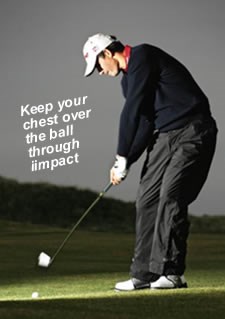Harrington’s shots he used to win the open
Last updated:
During a pre-Open warm-up round at Royal Birkdale, Padraig Harrington revealed the three key shots which he hoped would lead to him to a successful Open title defence. He also revealed how you can play them too…
You’ve literally got to take the rough with the smooth in The Open. The rough always has a major role to play in golf’s oldest championship and this year’s Birkdale bonanza was no exception to the rule.
OK, it wasn’t too severe during defending champion Padraig Harrington’s late May visit but he was acutely aware that there was still plenty of ‘growing’ time. Not that Harrington was too concerned about a bit – or indeed a lot – of rough. On the contrary.
“My ability to recover is a strength, as is my ability to adapt to the lie I get in the rough – to see how it can come out is the result of years of experience of playing links golf,” he was quick to point out
“Having said that, this is an area of the game I have to work on going into The Open to make sure I’m sharp, to get me back into that focus. And no matter how well you are playing, you’re still going to miss some greens because with links golf you’re going to get the odd bad bounce here and there.”
Clearly the rough doesn’t faze Harrington in the slightest and even when over-shooting the par 3 12th hole and landing deep in the ‘cabbage’ behind the green he shrugged his shoulders before saying: “I’m not worried about the lie. I expect to get this up and down.” And he did…
|
2 THE HIGH-RISE SPLASH |
|
|
Bunkers are a links course’s chief ally, along with the elements, and yet again they’re likely to have a pivotal role to play at Birkdale, deciding who succeeds and who fails… Birkdale is rife with deep pot bunkers, especially around the greens, and they can turn a player’s Claret Jug dreams into a living nightmare. Says Harrington: “Around the greens it’s about getting used to the different types of sand. I take full advantage of the practice bunker I’ve got at home. It’s got proper links sand in it. “It’s critical to get used to the texture of the sand. Generally links sand is lighter so the ball comes out quicker – you tend to get nice spin release though it also comes out faster so you need to familiarise yourself with this.” #1 Address: ball forward #2 Address: Swing: crisp strike tip “Finally, practise trap shots with a 7 or 8-iron, obviously opened up a bit. You’ll be delighted by how easy it is then to get your sand iron up quickly.” |
|
|
3 THE LOW APPROACH |
|
|
The wind usually plays a significant role at The Open and can quite literally blow away a player’s title hopes, so the ability to keep the ball below the wind, particularly hitting into the green, is priceless. Says Harrington: “This type of shot is not too hard with a 4-iron in your hands but with a 6 or 7-iron it’s a different ball game. Fortunately, I’ve played this shot a fair few times down the years and it’s a natural shot for me.” How you can drill it “But a lot depends on whether the pin position is accessible because you need the room to play this type of shot: ideally you want the pin to be at the back so you’ve got the room to run it up the green.”
|
|




